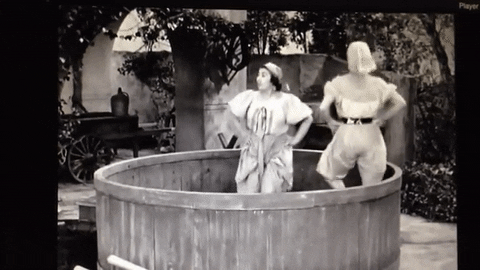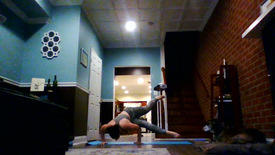Raisin Wine
Options
Replies
-
@aChuisle_moChroi wrote: »

I thought this was how wine is made.
I think to stomp on raisins you have to let your feet soak in water until they get all pruny looking, like raisins.1 -
aChuisle_moChroi wrote: »

I thought this was how wine is made.
I’ve seen it done this way, but I can’t get passed the fact that someone may have warts on their feet.1 -
rfitnessmfplulz wrote: »
Thank you for making me laugh out loud.0 -
aChuisle_moChroi wrote: »

I thought this was how wine is made.
This show = genius...one of my favorite episodes.1 -
laprimaJenny wrote: »laprimaJenny wrote: »rileysowner wrote: »Because....all you need for fermentation is water and sugar. Fermentation is an anaerobic process.
Fermentation requires oxygen, thus aerobic.
Raisins are dried grapes, you would need to add water to release the sugar so that you can ferment it. Boiling helps release the sugar into the boiling water so that when yeast is added it can ferment.
Exactly! This guy knows what he’s talking about.
Except that he is wrong and fermentation is not an aerobic process. If you have ever made sauerkraut or other fermented vegetables you would know that you have to keep them submerged away from O2 or they rot.
Look it up.
Well then, you are right about fermentation generally speaking. Although the process of making wine actually has two distinct stages known as primary and secondary, aka aerobic and anaerobic fermentations. That is why it is important that you do not use an air-lock container during the first few days of fermentation, which allows the juice to be open to the air. Then the wine is transferred to a secondary fermentor when fermentation is nearly complete. Once fermentation is on the decline, the wine must be placed in a more air-tight environment to keep it safe.
I like this lady. Can we be besties.1
Categories
- All Categories
- 1.4M Health, Wellness and Goals
- 391.5K Introduce Yourself
- 43.5K Getting Started
- 259.7K Health and Weight Loss
- 175.6K Food and Nutrition
- 47.3K Recipes
- 232.3K Fitness and Exercise
- 391 Sleep, Mindfulness and Overall Wellness
- 6.4K Goal: Maintaining Weight
- 8.5K Goal: Gaining Weight and Body Building
- 152.7K Motivation and Support
- 7.8K Challenges
- 1.3K Debate Club
- 96.3K Chit-Chat
- 2.5K Fun and Games
- 3.2K MyFitnessPal Information
- 22 News and Announcements
- 923 Feature Suggestions and Ideas
- 2.3K MyFitnessPal Tech Support Questions



